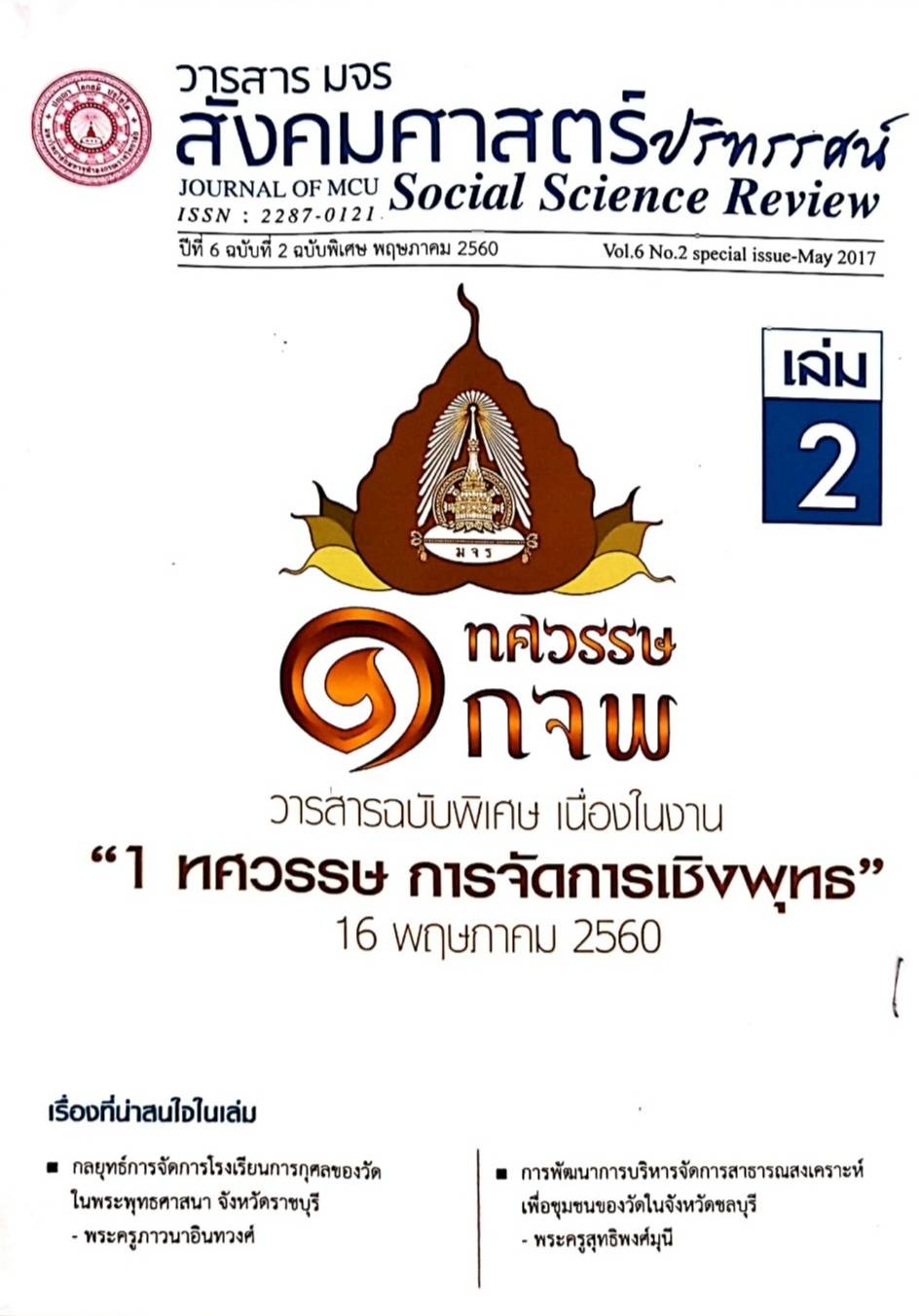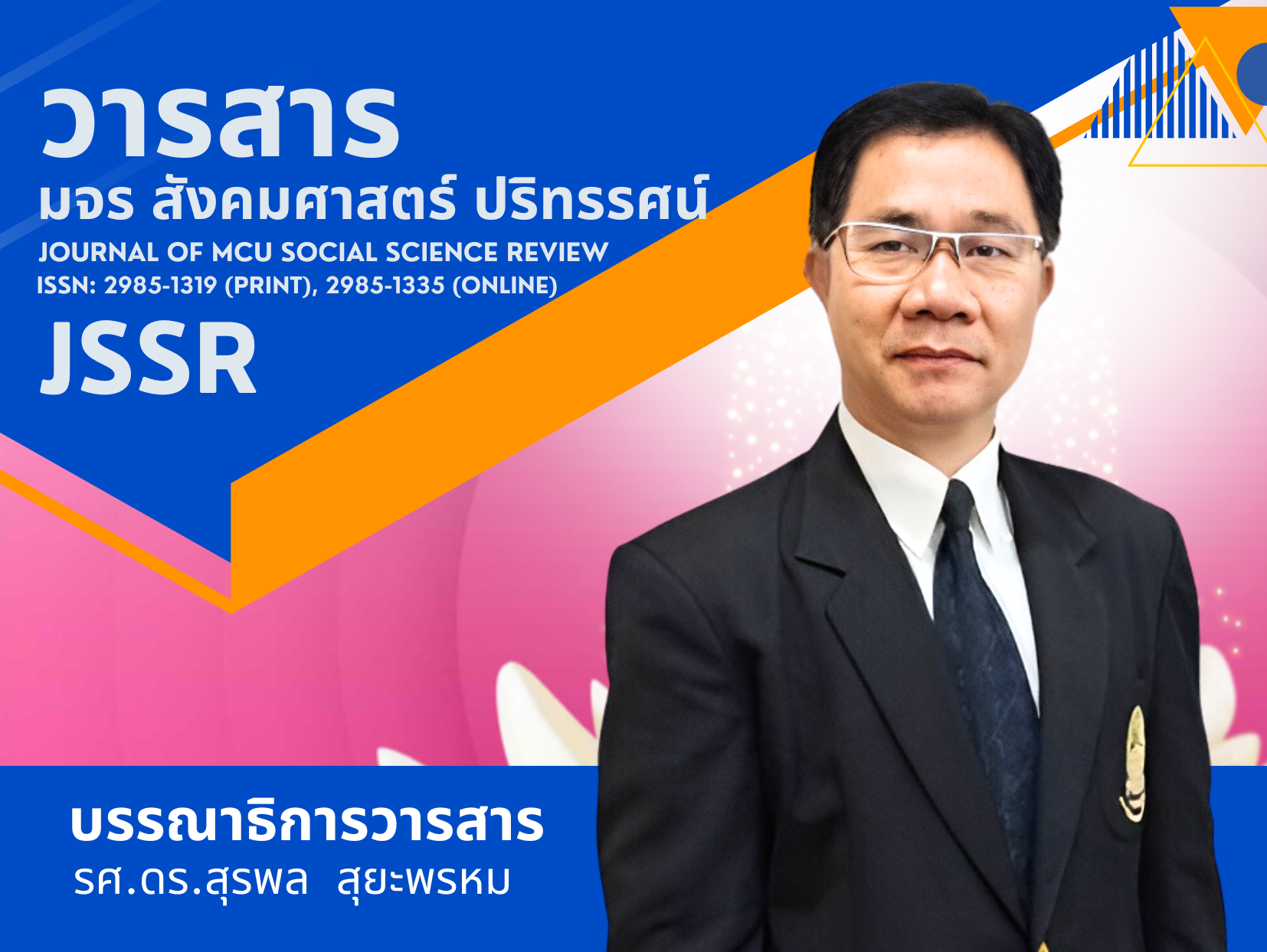THE PALI INTERPRETATION OF SAṄKHĀRA-DHAMMA FOR RESOLVING CONFLICTS
Keywords:
The Interpretation, Saṅkhāra-dhamma (compounded things), Resolving ConflictsAbstract
The purposes of academic paper were: 1) to study and analyze the Pali interpretation of Saṅkhāra-dhamma (compounded things) and natural conditions that are controversial in themselves and society, and 2) to propose the Buddhist ways for resolving internal and social conflicts. The results were found that: The term of ‘Saṅkhāra’ is of the Saṃ prefix, meaning ‘together’ and the Kara root implying doing. Kara can be Khara, and the ṇ suffix can be put and changed as Khāra, finally being Saṅkhāra. Saṅkhāra, a term figuring prominently in Buddhism, means 'that which has been put together', that is, Pañca-khandha (five
aggregates: corporeality, feeling, perception, mental formations, and consciousness). Since all of them work together, thus leading to a conflict, being called Saṅkhāradukkha. Eventually they lead to the conflicts between people and people, and the people and the society. The Buddha used Paññā (wisdom) to eliminate the conflicts by ways of taking Buddha-dhamma of Ovādapāṭimokha (the Principal Teaching).
Here, the 12 Buddhist ways for resolving internal and social conflicts can be mentioned. The internal conflicts can be solved by: 1) Sabbapāpassa akaraṇaṃ (not to do any evil), 2) Kusalassūpasampadā (to cultivate good), 3) Sacittapariyodapanaṃ (to purify the mind) and 4) Adhicitte ca (to devote oneself to higher concentration). Last, the social conflicts can be resolved by: 1) Khantī (patience), 2) Tītikkhā (forbearance), 3) Paraṃ viheṭhayanto(not to do harm others), 4) Anūpavādo(not to revile), 5) Anūpaghāto (not to do any harm), 6) Saṃvaro(restraint), 7) Mattaññutā ca Bhattassamiṃ (to be moderate in taking food) and 8) Pantanca sayāsanaṃ (to dwell in a secluded place).
References
พระพุทธรักขิตเถระ. ชินาลังการ. พระคันธสาราภิวงศ์แปลและอธิบาย. กรุงเทพมหานคร: ประยูรสาส์นไทย การพิมพ์.
พระโมคคัลลานเถระ พระสุภูติเถระ. อภิธานปฺปทีปิกาและอภิธานัปปทีปิกาสูจิ. กรุงเทพมหานคร:มหากุฏราชวิทยาลัย.
พุทธปฺปิยมหาเถโร. (2526). ปทรูปสิทฺธิ. กรุงเทพมหานคร: เฉลิมชาญการพิมพ์.
เพิ่มศักดิ์ มกราภิรมย์. (2554). ทฤษฎีสันติภาพ ความขัดแย้ง และความรุนแรง. ศูนย์ศึกษาและพัฒนาสันติวิธี. นครปฐม: มหาวิทยาลัยมหิดล,
มหาจุฬาลงกรณราชวิทยาลัย. (2535) พระไตรปิฎกภาษาบาลี ฉบับมหาจุฬาเตปิฏกํ 2550.กรุงเทพมหานคร: โรงพิมพ์มหาจุฬาลงกรณราชวิทยาลัย.
สุมงฺคลสามิเถโร. (2542). อภิธมฺมตฺถวิภาวินีฎีกา. กรุงเทพมหานคร : มหาวิทยาลัยมหาจุฬาลงกรณราชวิทยาลัย.
Downloads
Published
How to Cite
Issue
Section
License
Copyright (c) 2020 Journal of MCU Social Science Review

This work is licensed under a Creative Commons Attribution-NonCommercial-NoDerivatives 4.0 International License.
In order to conform the copyright law, all article authors must sign the consignment agreement to transfer the copyright to the Journal including the finally revised original articles. Besides, the article authors must declare that the articles will be printed in only the Journal of MCU Journal of Social Sciences. If there are pictures, tables or contents that were printed before, the article authors must receive permission from the authors in writing and show the evidence to the editor before the article is printed. If it does not conform to the set criteria, the editor will remove the article from the Journal without any exceptions.




